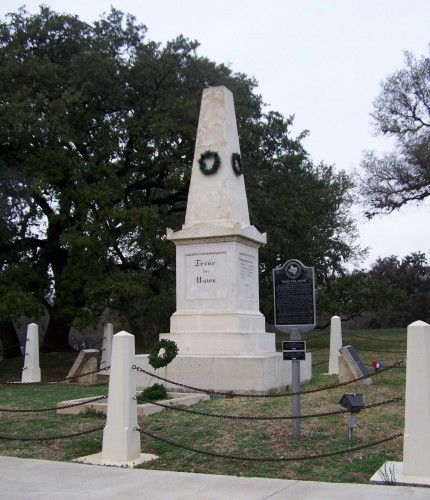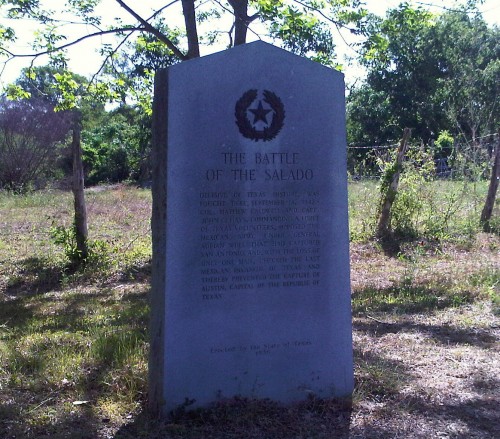As I am going up to Comfort, Texas on the 11th of August, to take part in the 150th anniversary observences of the Nueces Fight, and since this Civil War event is very little known outside of Texas — herewith some background. It’s longish, so in two parts, the second part posted tomorrow.)
texas
The Southern Belle With the Spine of Steel
Stephen Vincent Benet nailed down the type, in his poem epic John Brown’s Body, in a phrase that has resonated with me ever since I read it so long ago that I don’t recall when I read it the quintessential southern belle, who propped up the South on a swansdown fan:
Mary Lou Wingate, as slightly made
And as hard to break as a rapier-blade.
Bristol’s daughter and Wingate’s bride,
Never well since the last child died
But staring at pain with courteous eyes.
The Long Hot Summer of ’60
The summer of 1860 culminated a decade of increasingly bitter polarization among the citizens of the still-United States over the question of slavery, or as the common polite euphemism had it; “our peculiar institution.” At a period within living memory of older citizens, slavery once appeared as if it were something that would wither away as it became less and less profitable, and more and more disapproved of by practically everyone. But the invention of the cotton gin to process cotton fiber mechanically made large-scale agricultural production profitable, relighting the fire under a moribund industry. The possibility of permitting the institution of chattel slavery in the newly acquired territories in the West during the 1840s turned the heat up to a simmer. It came to a full rolling boil after California was admitted as a free state in 1850 . . . but at a cost of stiffening the Fugitive Slave Laws. And as a prominent senator, Jesse Hart Benton lamented subsequently, the matter of slavery popped up everywhere, as ubiquitous as the biblical plague of frogs. Attitudes hardened on both sides, and within a space of a few years advocates for slavery and abolitionists alike had all the encouragement they needed to readily believe the worst of each other.
Stand Off at the Salado – Conclusion
Most people accept as conventional wisdom about the Texas frontier, that Anglo settlers were always the consummate horsemen, cowboys and cavalrymen that they were at the height of the cattle boom years. But that was not so: there was a learning curve involved. The wealthier Texas settlers who came from the Southern states of course valued fine horseflesh. Horse-races were always a popular amusement, and the more down-to-earth farmers and tradesmen who came to Texas used horses as draft animals. But the Anglo element was not accustomed to working cattle the long-horned and wilderness adapted descendents of Spanish cattle from horseback. Their eastern cattle were slow, tame and lumbering. Nor were many of them as accustomed to making war from the saddle as the Comanche were. Most of Sam Houston’s army who won victory at San Jacinto, were foot-soldiers: his scouts and cavalry was a comparatively small component of his force. It was a deliberate part of Sam Houston’s strategy to fall back into East Texas, where the lay of the land worked in the favor of his army. The Anglos’ preferred weapon in those early days in Texas the long Kentucky rifle, a muzzle-loading weapon, impossible to use effectively in the saddle, more suited to their preferred cover of woods not the rolling grasslands interspersed with occasional clumps of trees which afforded Mexican lancers such grand maneuvering room.
Where Sgt. Mom Spent Sunday Afternoon…
At the world-renown Buda Wiener Dog Races!


